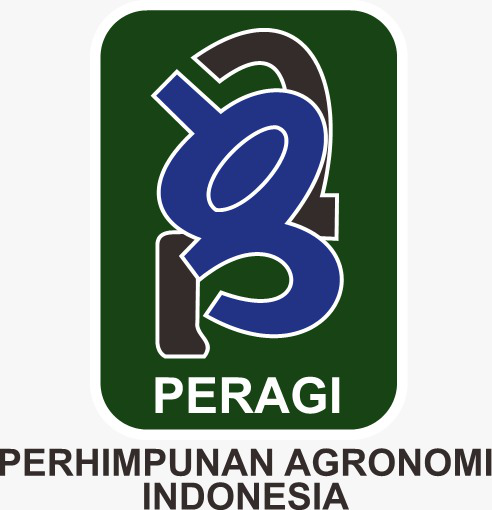Effect of Water Application and Zeba Products on The Growth of Palm Oil Plants (Elaeis guineensis Jacq) on Main Nursery
Abstract
The requirement of water for plants absolutely must be realized hence, it is necessary to make efforts in order to plants can still provide their water needs even though the availability of water for watering is less or even not available continuously. This study was conducted to evaluate the effect of water application and zeba products on the growth of oil palm seedlings in the main nursery. The study arranged as a randomized completely block design (RCBD) with 5 treatments: without Zeba with 2 times watering; without Zeba with 1 time watering; Zeba 10 g/polybag with 1 time watering; Zeba 20 g/polybag with 1 time watering and Zeba 20 g + Rock Phosphate 75 g with 1 time watering. Watering is carried out in accordance with the treatment at the time from 07.00-09.00 WIB in the morning and 16.00-18.00 WIB in the afternoon using a paddle with a volume of 2 liters of water. There were three replications for each treatment. Variables observed plant height, stem diameter, leaf number, leaf color, soil pH values. The results showed that Zeba application affects the height of oil palm seedlings in the main nursery, stem diameter, soil pH and leaf color, but does not affect the number of leaves. Twenty grams of zeba on soil showed the similar response of stem diameter, soil pH and leaf green color with 20 g zeba + Rock Phosphate fertilizer. Zeba application can save water use in the main nursery of oil palm plants
Downloads
References
Anonymous. (2024). Zeba corn starch. UPL. https://www.upl-ltd.com/id/
Ariyanti, M., Rosniawaty, S., & Utami, H. A. (2018). The growth response of oil palm (Elaeis guineensis Jacq.) toward the application of several dosages of filter cake compost accompanied with the different interval time of watering in main nursery. Jurnal Kultivasi, 17(3), 723-733.
Chiorescu, E., Clinciuradu, A. R., Chiorescu, D., Teliban, G. C., & Robu, T. (2017). Research on the influence of hydrogels Zeba SP and Terracottem on the development of some aromatic plant species. Research Journal of Agricultural Science, 49(4).
Dariah, A., Sutono, S., Nurida, N. L., Hartatik, W., & Pratiwi, E. (2015). Pembenah tanah untuk meningkatkan produktivitas lahan pertanian. Jurnal Sumberdaya Lahan, 9(2), 67-84. http://ejurnal.litbang.pertanian.go.id/index.php/jsl/article/view/6571
Darmawan, S., Carolita, I., Agustan, Dirgahayu, D., Suyadini, W., Hernawati, R., & Wiratmoko, D. (2021). Model fenologi kelapa sawit berbasis pengindraan jauh (I. Carolita & D. Dirgahayu, Eds.; 1st ed.). ITENAS.
Harjadi, S., & Yahya, S. (1996). Fisiologi stress lingkungan. PAU Bioteknologi IPB. https://opac.lib.itenas.ac.id/index.php?p=show_detail&id=14207
Dwiyana, S., Sampoerna, R., & Ardian. (2015). Waktu dan volume pemberian air pada bibit kelapa sawit (Elaeis guineensis Jacq.) di main nursery. Fakultas Pertanian Universitas Riau, Pekan Baru.
Johnson, J. V., Exton, D. A., Jaimie, |, Dick, T. A., Oakley, J., Jompa, J., & Pincheira-Donoso, D. (2022). The relative influence of sea surface temperature anomalies on the benthic composition of an Indo-Pacific and Caribbean coral reef over the last decade. Ecology and Evolution, 12(9). https://doi.org/10.1002/ECE3.9263
Kumari, V. V., Banerjee, P., Verma, V. C., Sukumaran, S., Chandran, M. A. S., Gopinath, K. A., Venkatesh, G., Yadav, S. K., Singh, V. K., & Awasthi, N. K. (2022). Plant nutrition: An effective way to alleviate abiotic stress in agricultural crops. International Journal of Molecular Sciences, 23(15), 8519. https://doi.org/10.3390/ijms23158519
Manuhuttu, A. P., Rehatta, H., & Kailola, J. J. G. (2014). Pengaruh konsentrasi pupuk hayati Bioboost terhadap peningkatan produksi tanaman selada (Lactuca sativa L.). Agrologia, 3(1), 18-27. https://doi.org/10.30598/a.v3i1.256
Martha, H., Ardian, M., & Amrul, K. (2015). Penggunaan bahan penyimpan air dan volume pemberian air terhadap pertumbuhan bibit kelapa sawit (Elaeis guineensis Jacq.) di main nursery. JOM Faperta, 2(2).
Salgotra, R. K., & Chauhan, B. S. (2023). Genetic diversity, conservation, and utilization of plant genetic resources. Genes, 14, 174. https://doi.org/10.3390/genes14010174
Setyamidjaja, D. (2006). Budidaya kelapa sawit. Kanisius.
Sri Suryanti, Wibowo, A., & Hartati, R. M. (2023). Applying biochar and oil palm seeds' resistance to drought stress. Jurnal Agronomi Tanaman Tropika, 5(2), 425-431. https://doi.org/10.36378/juatika.v5i2.3143
Sulistyo, D. H., Purba, B. A., Siahaan, D., Efendi, J., & Sidik, A. (2010). Budidaya kelapa sawit. PT. Balai Pustaka dan Pusat Penelitian Kelapa Sawit.
Zafata, F., & Roy, R. N. (2004). Use of phosphate rocks for sustainable agriculture. Food and Agriculture Organization of the United Nations. https://www.fao.org/4/y5053e/y5053e00.htm#Contents
Zhang, X., Hao, Z., Singh, V. P., Zhang, Y., Feng, S., Xu, Y., & Hao, F. (2022). Drought propagation under global warming: Characteristics, approaches, processes, and controlling factors. Science of The Total Environment, 838, 56021. https://doi.org/10.1016/J.SCITOTENV.2022.156021
Copyright (c) 2024 Egi Syahputra, Asmanizar Asmanizar, Rahmad Setia Budi, Noverina Chaniago

This work is licensed under a Creative Commons Attribution 4.0 International License.
Authors who publish with Jurnal Agronomi Tanaman Tropika (JUATIKA) agree to the following terms:
Authors retain copyright and grant the Jurnal Agronomi Tanaman Tropika (JUATIKA) right of first publication with the work simultaneously licensed under a Creative Commons Attribution License (CC BY 4.0) that allows others to share (copy and redistribute the material in any medium or format) and adapt (remix, transform, and build upon the material for any purpose, even commercially) with an acknowledgment of the work's authorship and initial publication in Jurnal Agronomi Tanaman Tropika (JUATIKA).
Authors are able to enter into separate, additional contractual arrangements for the non-exclusive distribution of the journal's published version of the work (e.g., post it to an institutional repository or publish it in a book), with an acknowledgment of its initial publication in Jurnal Agronomi Tanaman Tropika (JUATIKA). Authors are permitted and encouraged to post their work online (e.g., in institutional repositories or on their website) prior to and during the submission process, as it can lead to productive exchanges, as well as earlier and greater citation of published work.







 More Information
More Information



